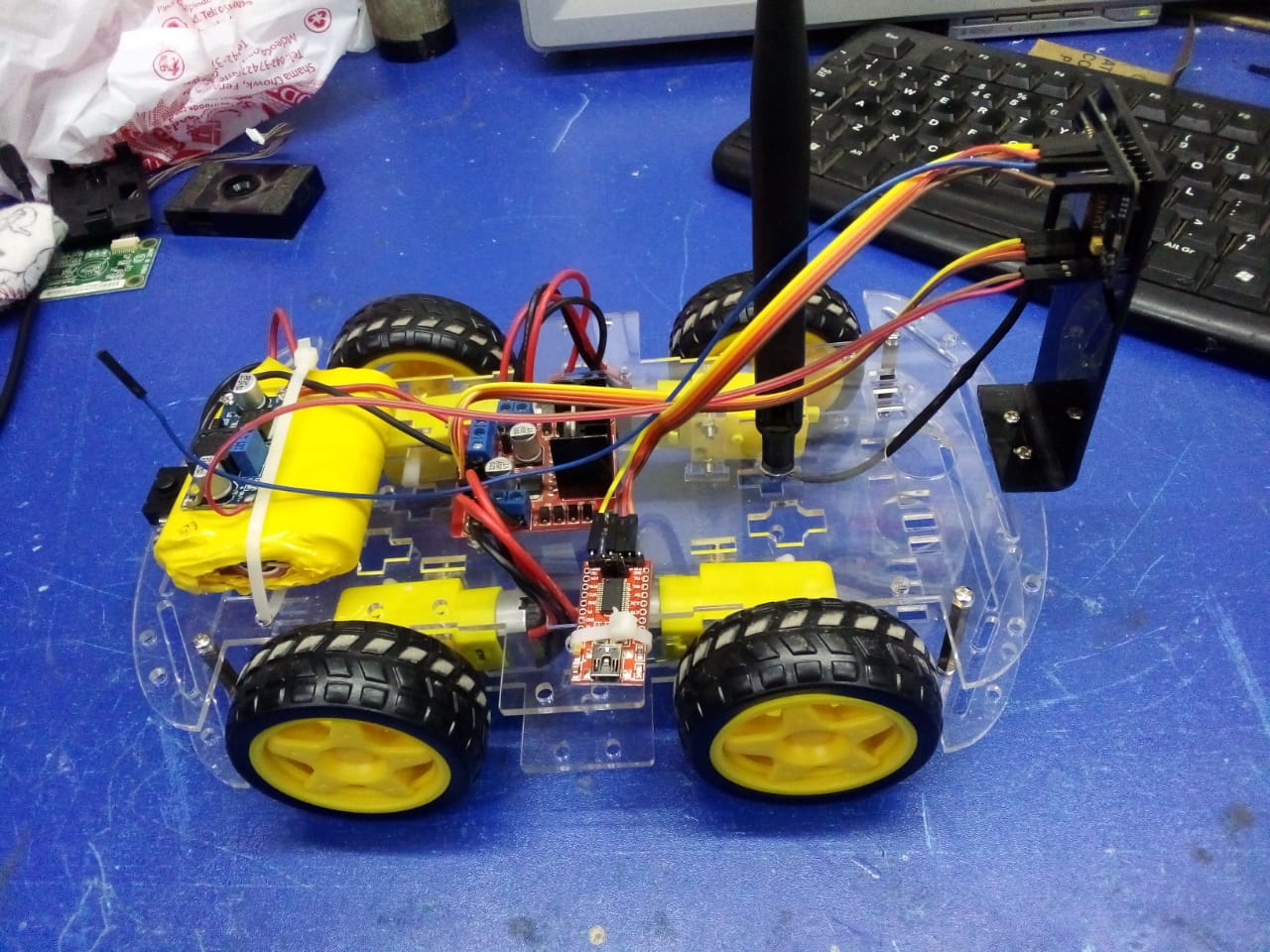

- #ARDUINO CAMERA STREAMING HOW TO#
- #ARDUINO CAMERA STREAMING INSTALL#
- #ARDUINO CAMERA STREAMING SERIAL#
- #ARDUINO CAMERA STREAMING CODE#
#ARDUINO CAMERA STREAMING HOW TO#
In this tutorial, you will learn how to program the ESP32 Cam using Arduino Uno or Arduino Nano. ESP32 connection with Arduino Uno or Arduino Nano:ĮSP32 Cam Programming using Arduino, Description:.ESP32 Cam Programming using Arduino, Description:.It should be installed after a few seconds.
#ARDUINO CAMERA STREAMING INSTALL#
Search for ESP32 and press install button for the “ ESP32 by Espressif Systems“: Note: if you already have the ESP8266 boards URL, you can separate the URLs with a comma as follows:, In your Arduino IDE, go to File> PreferencesĮnter into the “Additional Board Manager URLs” field as shown in the figure below. To install the ESP32 board in your Arduino IDE, follow these next instructions: Now you have your video streaming web server up and running with face detection and recognition with the example from the library. After enrolling a new user, it should detect the face later on (subject 0).Īnd that’s it. It will make several attempts to save the face. There are also several camera settings that you can play with to adjust the image settings.įinally, you can do face recognition and detection.įirst, you need to enroll a new face. Unfortunately, this example doesn’t save the photos, but you can modify it to use the on board microSD Card to store the captured photos. You also have the option to take photos by clicking the Get Still button. Press the Start Streaming button to start video streaming. Open a browser and type the ESP32-CAM IP address. Now, you can access your camera streaming server on your local network.
#ARDUINO CAMERA STREAMING SERIAL#
The ESP32 IP address should be printed in the Serial Monitor. Press the ESP32-CAM on-board Reset button. Open the Serial Monitor at a baud rate of 115200. Getting the IP addressĪfter uploading the code, disconnect GPIO 0 from GND.
#ARDUINO CAMERA STREAMING CODE#
To upload the code, follow the next steps:ġ) Go to Tools > Board and select AI-Thinker ESP32-CAM.Ģ) Go to Tools > Port and select the COM port the ESP32 is connected to.ģ) Then, click the upload button to upload the code.Ĥ) When you start to see these dots on the debugging window as shown below, press the ESP32-CAM on-board RST button.Īfter a few seconds, the code should be successfully uploaded to your board. Important: GPIO 0 needs to be connected to GND so that you’re able to upload code. Make sure the jumper is in the right place to select 5V. Many FTDI programmers have a jumper that allows you to select 3.3V or 5V. ESP32-CAM Upload CodeĬonnect the ESP32-CAM board to your computer using an FTDI programmer. Now, the code is ready to be uploaded to your ESP32. If none of these correspond to the camera you’re using, you need to add the pin assignment for your specific board in the camera_pins.h tab. Select camera model //#define CAMERA_MODEL_WROVER_KIT //#define CAMERA_MODEL_ESP_EYE //#define CAMERA_MODEL_M5STACK_PSRAM //#define CAMERA_MODEL_M5STACK_WIDE # define CAMERA_MODEL_AI_THINKER Code language: Arduino ( arduino ) In your Arduino IDE, go to File > Examples > ESP32 > Camera and open the CameraWebServer example.īefore uploading the code, you need to insert your network credentials in the following variables: So, you need to have Arduino IDE installed as well as the ESP32 add-on.Ĭlick here to go to the bottom of the page for the directions to install the addon In this project, we use Arduino IDE to program the ESP32-CAM board. Important: Make sure you have your Arduino IDE updated as well as the latest version of the ESP32 add-on. SETUP Video Streaming Server on ESP32-CAMįollow the next steps to build a video streaming web server with the ESP32-CAM that you can access on your local network. GPIO 4: Data 1 (also connected to the on-board LED).The following pins are internally connected to the microSD card reader: When GPIO 0 is connected to GND, the ESP32 is in flashing mode. Additionally, GPIO 0 also plays an important role, since it determines whether the ESP32 is in flashing mode or not. You need these pins to upload code to your board. There are three GND pins and two pins for power: either 3.3V or 5V. Support for serial port local and remote firmware upgrades (FOTA).Support Smart Config/AirKiss technology.Support OV2640 and OV7670 cameras, built-in flash lamp.Up to 160MHz clock speed, summary computing power up to 600 DMIPS.Low power 32-bit CPU,can also serve the application processor.The smallest 802.11b/g/n Wi-Fi BT SoC module.

The ESP32-CAM doesn’t come with a USB connector, so you need an FTDI programmer to upload code through the U0R and U0T pins (serial pins). Connect the parts according to the wiring diagram.Streaming video and facial recognition with ESP32-CAM


 0 kommentar(er)
0 kommentar(er)
